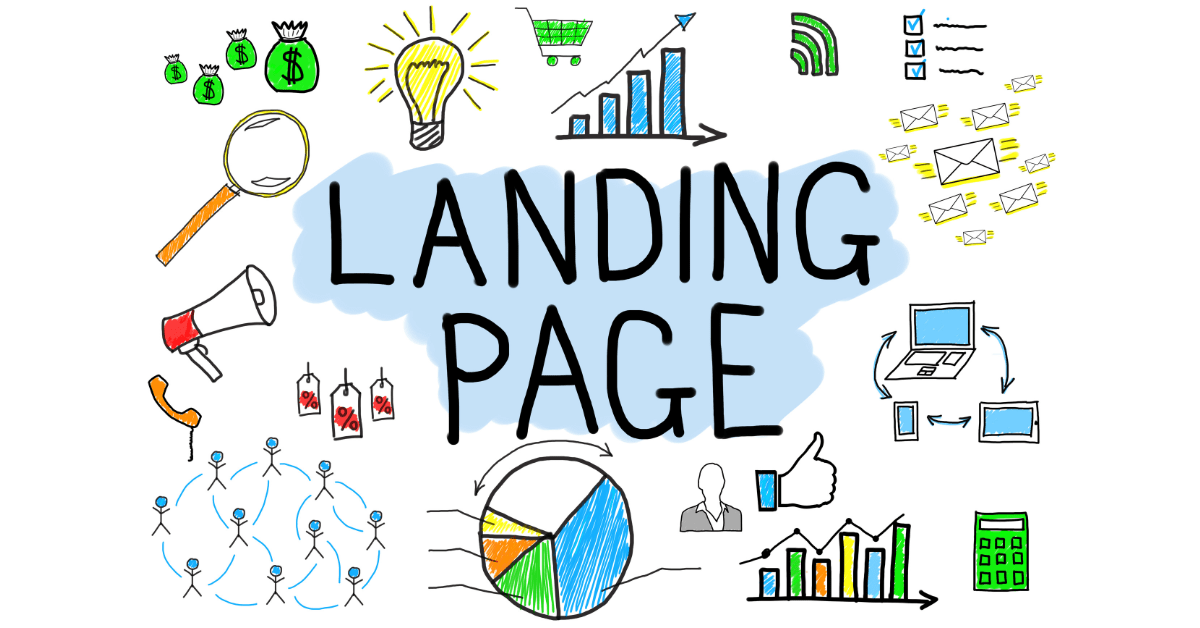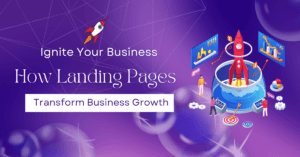Introduction
Welcome to “The Ultimate Landing Page Beginners Guide: Your Path to Conversions.” In today’s digital age, a compelling landing page is essential for businesses to capture the attention of potential customers and drive conversions. This comprehensive guide will break down the core components of a successful landing page, provide tips for effective design and copywriting, offer strategies to optimize conversion rates, and guide you through the testing and iteration process. By following this guide, you’ll have the tools and knowledge to create landing pages that convert like never before.
what is landing page?
A landing page is a standalone web page that is designed specifically for a marketing or advertising campaign. It is often used to capture leads or convert visitors into customers. Unlike other web pages on a website, a landing page is created with a single objective in mind and is free from distractions that might lead the visitor away from the intended action. The content on a landing page is focused and concise, providing the necessary information to convince the visitor to take the desired action, such as making a purchase or filling out a form. A well-designed landing page includes a compelling headline, persuasive copy, eye-catching visuals, and a strong call-to-action. It is important to optimize a landing page for conversion by incorporating relevant keywords, aligning the page with the corresponding marketing campaign, and testing different elements to improve performance. By directing visitors to a dedicated landing page, businesses can improve their conversion rates, track the effectiveness of their marketing efforts, and tailor their messaging to specific audience segments. Landing pages are an essential component of any digital marketing strategy as they help businesses maximize the return on their advertising investments and generate more leads or sales.
Different types of landing pages
The type of landing page you use depends on your marketing goals and the specific campaign you are running. Here are three common types of landing pages:
Lead generation landing pages
Lead generation landing pages focus on collecting contact information from visitors in exchange for something of value, such as a free eBook, a webinar, or a newsletter subscription. These pages typically include a lead capture form and compelling copy highlighting the benefits of the offer.
Click-through landing pages
Click-through landing pages are designed to guide visitors to another page, usually an e-commerce product page or a registration page. These pages provide additional information about the product or service and include a prominent CTA button that directs visitors to the desired destination.
Sales landing pages
Sales landing pages are specifically designed to lead visitors towards making a purchase. These pages include persuasive copy emphasizing the product’s features and benefits, customer testimonials, and a clear and straightforward checkout process.
Components of a Successful Landing Page
Compelling Headline: Capturing visitors’ attention
The headline is the first thing visitors see when they arrive on your landing page, and it needs to be attention-grabbing and relevant to their needs. A compelling headline should convey a clear value proposition and entice visitors to stay and explore further.
Engaging Visuals: Enhancing appeal and credibility
Visual elements, such as images, videos, and infographics, can significantly enhance the appeal and credibility of your landing page. They should be carefully chosen to align with your brand image and convey the benefits or features of your product or service.
Clear Call-to-Action (CTA): Guiding visitors towards conversion
The call-to-action (CTA) is a crucial element of a landing page. It tells visitors what action they should take next, whether it’s filling out a form, making a purchase, or signing up for a newsletter. A well-designed CTA button with clear, action-oriented text can significantly improve your conversion rates.
Clear Call-to-Action (CTA): Guiding visitors towards conversion
Your landing page copy should be persuasive and compelling, focusing on the benefits rather than just the features of your product or service. Use emotional appeals, storytelling, and customer testimonials to build trust and encourage visitors to take the desired action.
Persuasive Copywriting: Convincing visitors to take action
Incorporating social proof, such as customer testimonials, reviews, and case studies, into your landing page can help establish credibility and build trust with your visitors. People are more likely to convert when they see that others have had positive experiences with your brand.
Designing an Effective Landing Page
Social Proof: Demonstrating credibility and trustworthiness
Your landing page should have a clean and clutter-free layout that guides visitors’ attention to the most important elements. Eliminate unnecessary distractions and create a seamless user experience with easy navigation and intuitive design.
Streamlined Layout: Minimal distractions and easy navigation
In today’s mobile-first world, it’s crucial to ensure that your landing page is optimized for mobile devices. It should be responsive, adapting to different screen sizes and resolutions, and providing a seamless experience for mobile users.
Mobile Responsiveness: Optimizing for various devices
Colors can evoke emotions and impact visitors’ perception of your brand. Understanding color psychology can help you choose the right colors that align with your brand message and create the desired emotional response from your visitors.
Color Psychology: Selecting colors to evoke desired emotions
The choice of typography can significantly impact the readability and aesthetics of your landing page. Select fonts that are easy to read and align with your brand image. Use font sizes and styles strategically to highlight important elements and create visual hierarchy.
Crafting Compelling Copy
Typography: Choosing fonts for readability and aesthetics
It’s crucial to understand your target audience and tailor your messaging to their specific needs and pain points. Create targeted content that speaks directly to your visitors and demonstrates how your product or service can solve their problems or fulfill their desires.
Targeted Messaging: Tailoring content to the audience’s needs
Tap into your visitors’ emotions by highlighting how your product or service can make their lives better, easier, or more enjoyable. Use persuasive language and storytelling techniques to evoke their desires and address their pain points.
Emotional Appeals: Appealing to visitors’ desires and pain points
When crafting your landing page copy, focus on the benefits that your customers will gain from using your product or service, rather than solely outlining the features. By highlighting the positive outcomes and results, you provide visitors with a compelling reason to convert.
Benefits vs. Features: Focusing on what customers gain
An essential part of creating a high-converting landing page is conducting A/B testing. Test different variations of your headline, copy, CTA, and visuals to identify which elements resonate best with your audience. Continuously iterate and optimize based on the results for ongoing improvement.
Optimizing Conversion Rates
Tracking Metrics: Understanding key performance indicators (KPIs)
To optimize your landing page’s conversion rates, it’s essential to track and analyze relevant metrics, such as click-through rates, bounce rates, form completion rates, and conversion rates. These key performance indicators (KPIs) provide valuable insights into your landing page’s effectiveness and areas for improvement.
A/B Testing: Iterating and optimizing copy for better results
Optimizing your form fields is crucial to reducing friction and improving conversion rates. Keep your forms concise and only ask for essential information. Use visual cues, such as placeholders and color changes, to guide users through the form completion process.
Tracking Metrics: Understanding key performance indicators (KPIs)
Slow-loading landing pages can lead to a high bounce rate and lower conversion rates. Ensure your landing page loads quickly and optimally across different devices and internet connections. Compress images, minify code, and leverage caching techniques to improve overall performance.
Form Optimization: Simplifying and reducing friction in form fields
Personalization can significantly impact a visitor’s experience and their likelihood of converting. Leverage data and analytics to personalize your landing pages based on visitor demographics, location, previous interactions, or browsing behavior. Tailoring the experience to individual visitors can increase engagement and conversions.
Testing and Iterating
Speed and Performance: Ensuring fast load times for a better user experience
Split testing, or A/B testing, involves running experiments on your landing page to compare different variations and determine which performs better. Test different headlines, copy, visuals, and CTAs to identify the most effective combination for increased conversions.
Personalization: Customizing landing pages based on visitor data
When we talk about personalization for landing pages, it means that the content and design of the page are customized based on specific data about each visitor. This can include things like their age, gender, location, interests, and even their browsing history on the website. By gathering and analyzing this information, we can create a more tailored and relevant experience for each visitor.
For example, let’s say someone visits a website selling clothing. With personalization, the landing page can be customized to show clothing items that match their previous browsing history or their location’s weather conditions. This way, they see content that is more likely to grab their attention and meet their specific needs.
Overall, personalization helps to improve the user experience by delivering content and offers that are more relevant to each individual visitor. It’s like having a website that knows exactly what you’re looking for and provides it to you right away. I hope that clarifies things! If you have any more questions, feel free to ask.
Split Testing: Experimenting with different elements for improvements
Heatmaps and user behavior tracking tools provide valuable insights into how visitors engage with your landing page. Analyze where users click, how far they scroll, and what content they spend the most time on. Use this information to optimize the layout and content placement for better conversion rates.
Conversion Rate Optimization (CRO) Tools: Leveraging technology to enhance performance
Utilize conversion rate optimization (CRO) tools to streamline and automate the testing and optimization process. These tools provide advanced analytics, heatmaps, user feedback, and other features to help you make data-driven decisions and continuously enhance your landing page’s performance.
Conclusion
Congratulations! You’ve reached the end of “The Ultimate Landing Page Beginners Guide: Your Path to Conversions.” Armed with the knowledge and strategies outlined in this guide, you now have the tools to create compelling landing pages that drive conversions for your business. Remember, crafting a high-converting landing page requires a combination of effective design, persuasive copywriting, optimization tactics, and continuous testing and iteration. Implement the strategies you’ve learned and keep refining your landing pages to ensure optimal results. Good luck on your journey to converting visitors into customers!
Thank you for reading! Share your experiences and questions in the comments below!




